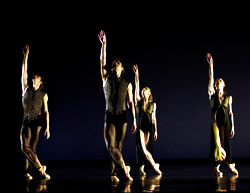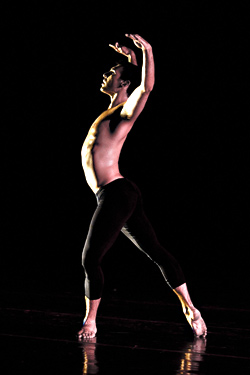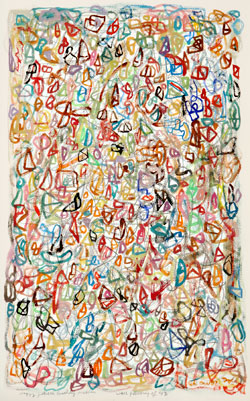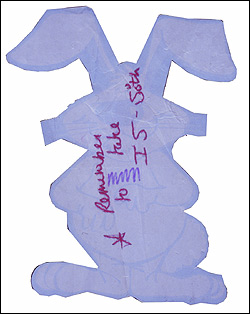Perfection is theoretically attainable in the realm of classical ballet. Not so in the act of walking.
In Pacific Northwest Ballet’s performance of Carmen Entre’acte—Trisha Brown’s choreography for Bizet’s Carmen—guest artist Miranda Weese slowly strode across the stage with a hip-jutting swagger as her arms described a simple arc above her head. She continued these movements unaffected as her partner, Christopher Maraval, gradually—and comically—shifted her horizontally. As in Spanish Dance (a 1973 piece set to Bob Dylan in which Brown’s conscious swagger binds a line of five formerly disconnected bodies), the simple act of walking was given new life. Brown’s movements may be simple, but they are far from simplistic.
“It’s good to be back,” said Brown, originally from Aberdeen, during a meet-the-artist session before the performance. Peter Boal, artistic director of PNB, admitted there was little binding the choreographers in his Celebrate Seattle Festival besides their ties to the region. But the stylistic differences are ultimately what made the program exciting. Compared to Mark Morris, Merce Cunningham, and Robert Joffrey, whose work was also performed in the festival, Brown is the least engaged in dance as an auxiliary to music. Her dances have often been staged out of doors and in silence—not exactly standard in traditional ballet.
Her choreography for Carmen was originally performed as part of a mid-’80s production directed by maverick Italian filmmaker Lina Wertmüller in Naples. Back then, Brown’s choreography was criticized as being “out of step” with the musical score. That is still true. The dancers’ repetitive, somewhat staccato gestures convey little of Carmen‘s narrative or Bizet’s sweeping emotionalism. But that is Brown’s intent. Her minimalist musings focus on gravity in combination with quotidian movements.
If Brown finds success in repetition and single gestures, Christopher Stowell, Oregon Ballet Theatre’s artistic director, revels in eclectic movement with his Adin, a set of pas de deux to Rachmaninoff songs that was masterfully executed by visiting OBT dancers. The son of former PNB co–artistic directors Francia Russell and Kent Stowell—who were both onetime members of the New York City Ballet—Stowell creates work that’s perfectly in line with the Balanchine legacy: It boasts flawless lifts, effortless turns, airy jumps combined with lyricism, speed, and grace. Michael Mazzola’s extraordinary lighting design used graphic blocks of light to create fissures in space through which OBT’s dancers appeared like iPod advertisements in sharp silhouette.
The festival’s third and final week also included two world premieres. Sense of Doubt was choreographed by Paul Gibson, a longtime PNB company member who retired in 2004 to become the company’s ballet master. Doubt hints at a previously unexplored darker side of Gibson, with loosely constructed narratives of deception. Athletic and lyrical dance is juxtaposed against freeze-frame stillness.
Mary Sheldon Scott’s Locate, set to music by Jarrad Powell, opened with dancers dressed in simple white leotards while Powell created sounds subtle as the hum of fluorescent lighting. When Ellie Sandstrom—a dancer of powerful technique, knife-sharp execution, and expressive gesture—burst back onto the stage re-outfitted in red, the change was as startling and cinematic as a drop of blood falling on snow. With groups of dancers stretched out to explore air and floor, organically grouping together before falling apart, Scott capitalized on her individual company members’ wide-ranging physical traits and abilities.








